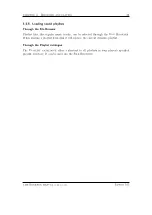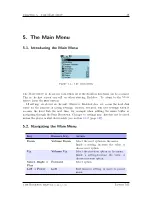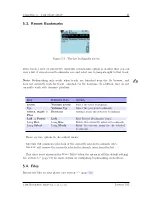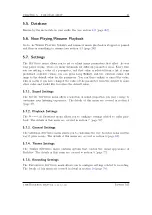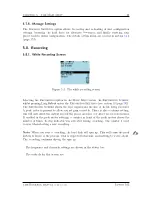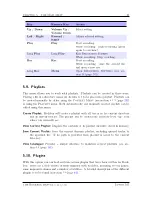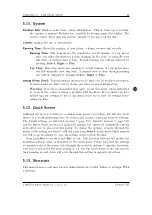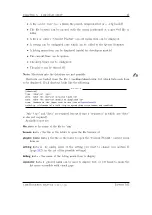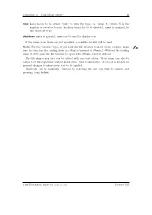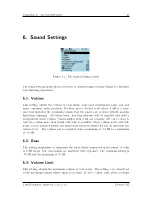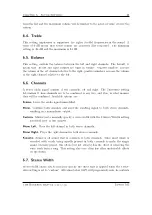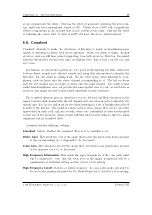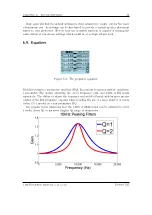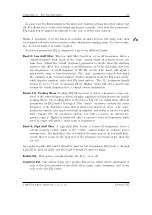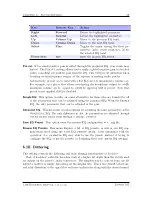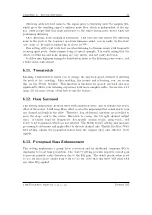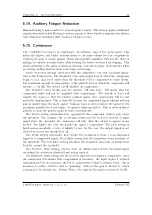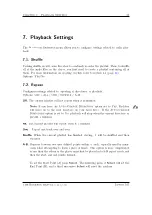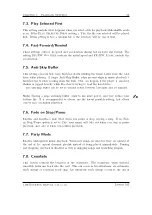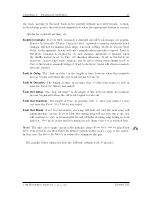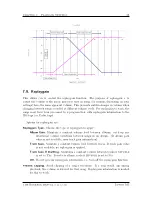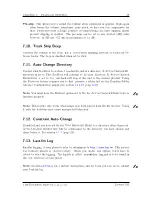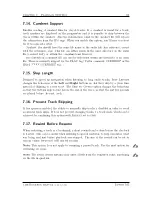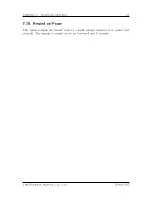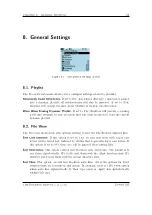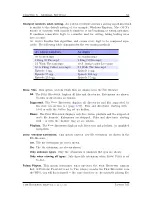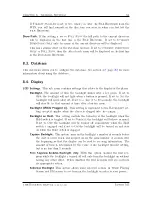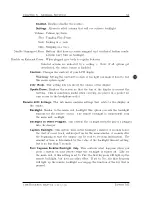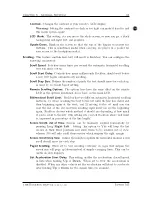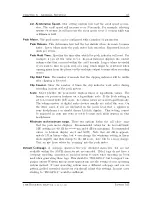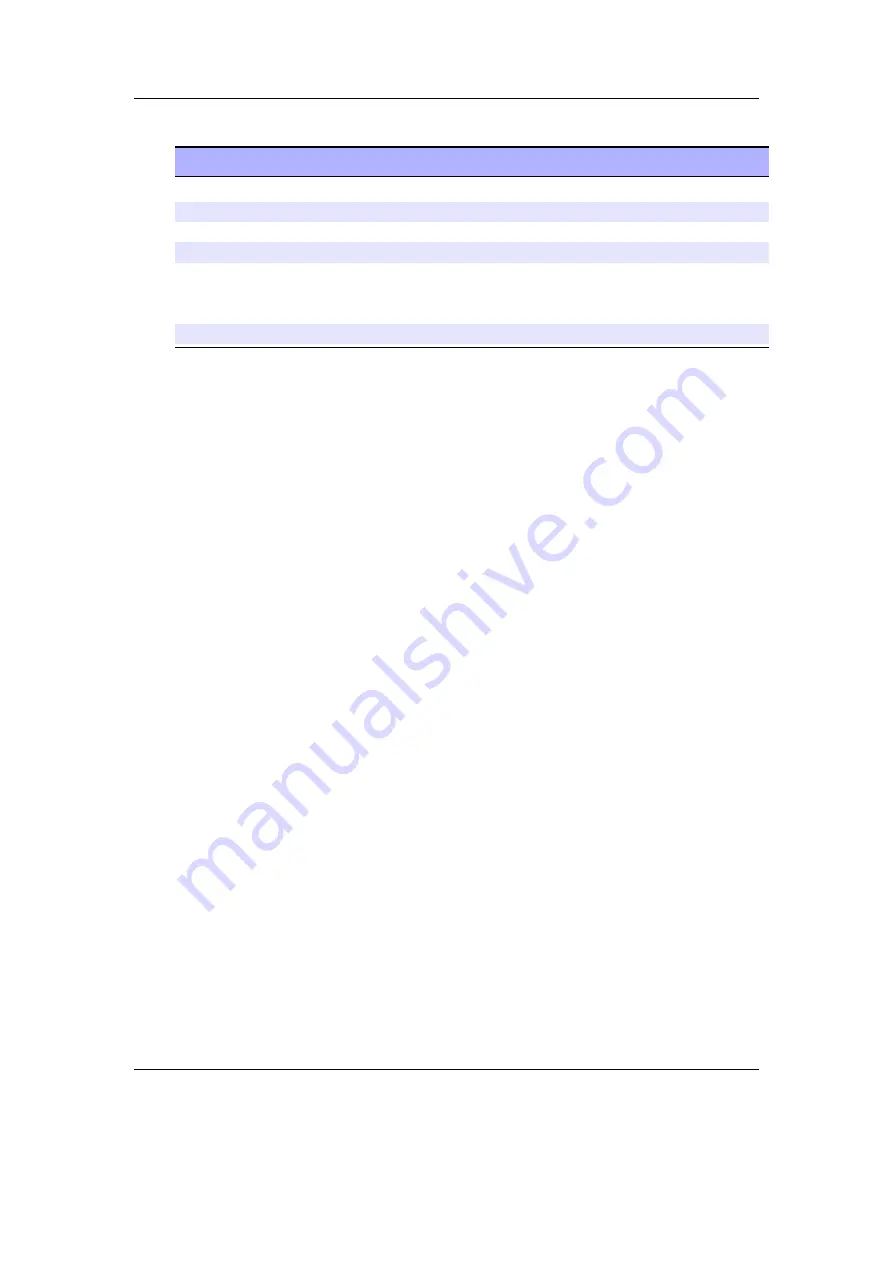
Chapter 6. Sound Settings
52
Key
Remote Key
Action
Right
Forward
Raises the highlighted parameter.
Left
Rewind
Lowers the highlighted parameter.
Up
Volume Up
Moves to the previous EQ band.
Down
Volume Down
Moves to the next EQ band.
Select
Play
Toggles the cursor among the three pa-
rameters (gain, centre frequency, Q) for
the selected EQ band
Power
/
Rec
Rec
Exits the graphic EQ screen.
Pre-cut.
If too much positive gain is added through the graphical EQ, your music may
distort. The
Precut
setting allows you to apply a global negative gain to decoded
audio, cancelling out positive gain from the EQ. This will prevent distortion when
boosting certain frequency ranges, at the expense of making audio quieter.
Alternatively, precut can be used with a flat EQ curve to implement a volume cap.
For example, on a player that allows overdriving the headphone output to +6dB,
maximum volume can be capped to +0dB by applying 6dB of precut. Note that
precut is not applied if EQ is disabled.
Simple EQ.
This option provides an easier alternative for those who are daunted by all
of the parameters that can be adjusted using the graphical EQ. With the
Simple
EQ
, the only parameter that can be adjusted is the gain.
Advanced EQ.
This sub menu provides options for adjusting the same parameters as the
Graphical EQ
. The only difference is that the parameters are adjusted through
textual menus rather than through a graphic interface.
Save EQ Preset.
This option saves the current EQ configuration in a
.cfg
file.
Browse EQ Presets.
This menu displays a list of EQ presets, as well as any EQ con-
figurations saved using the
Save EQ Preset
option. Users unfamiliar with the
operation of a parametric EQ may wish to use the presets instead of trying to
configure the EQ, or use the presets for designing their own custom EQ settings.
6.10. Dithering
This setting controls the dithering and noise shaping functionality of Rockbox.
Most of Rockbox’ audio file decoders work at a higher bit depth than the 16 bits used
for output on the player’s audio connectors. The simplest way to convert from one bit
depth to another is simply discarding all the surplus bits. This is the default behaviour,
and adds distortion to the signal that will vary in character along with the desired sound.
The Rockbox manual
(version 3.14)
Iaudio M5

